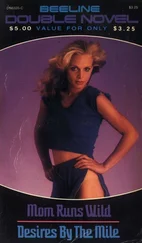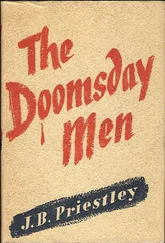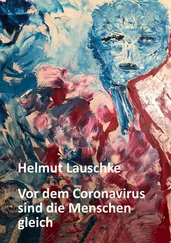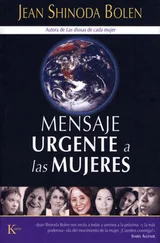But in the autumn of 1950, Szilard’s fears of a cobalt bomb were given independent scientific backing. Dr James R. Arnold of the Institute for Nuclear Studies, Chicago, looked at whether such a weapon was technically feasible. According to Newsweek , the ‘brilliant, boyish (aged 27) physicist’ had ‘started out, slide rule in hand, to demolish Szilard’s arguments. But he finished by agreeing on many points.’
Arnold’s calculations showed that the doomsday device described by Leo Szilard would have to be an enormous weapon, ‘perhaps two and a half times as heavy as the battleship Missouri ’. 32The heavy hydrogen (deuterium) that fuelled the H-bomb would cost as much as the Manhattan Project, $2 billion. In addition, at least 10,000 tons of cobalt would be needed to create the lethal radioactive isotope, cobalt-60, when the bomb exploded. Most of Szilard’s assumptions about the cobalt bomb were confirmed by the Chicago scientist. Virtually the only area of uncertainty was whether the radioactive dust from such a doomsday bomb would be evenly distributed around the world.
Although Arnold concluded that ‘the human race is in no immediate danger’, because such a weapon would require ‘a full-scale effort by a major country over many years’, he was convinced that ‘the vast majority of the race can be killed off in this way’. 33The only ray of hope that Newsweek could find was that ‘those who would use the weapon for murder must be willing to accept suicide in the bargain’. 34
As well as being the birthplace of the atomic age and the cobalt bomb, the University of Chicago was home to the world’s most important journal on atomic affairs – the Bulletin of the Atomic Scientists . It was the Bulletin that commissioned James Arnold to assess Leo Szilard’s frightening prediction about a doomsday weapon. The Bulletin was conceived in the Stineway Drug Store on 57th Street, east of the University, where Russian-born biophysicist Eugene Rabinowitch met his colleagues Hyman Goldsmith and sociologist Edward Shils for coffee every day.
The first issue appeared on 10 December 1945, a few months after the Hiroshima and Nagasaki bombs. In June 1947 the Bulletin ’s cover gained its iconic image of the doomsday clock, designed by Martyl Langsdorf, the wife of a Manhattan Project physicist. Initially this graphic representation of how close we were to a nuclear holocaust was set at seven minutes to midnight. But after the first Soviet atomic test in 1949, the clock was reset to just three minutes before doomsday, in order to reflect the magazine’s growing concern at the world situation. The countdown to atomic Armageddon had begun.
The Bulletin ’s co-founder Edward Shils knew Leo Szilard well. The journal provided a platform for the campaigning scientist, publishing his peace plans and his short fiction, which he started writing after 1947. When his friend died in 1964, Shils wrote a perceptive memoir. Szilard hated being tied down, said Shils, to a person, a job, or a home: ‘He was a restless, homeless spirit. He owned no property, very few books… Hotel lobbies, cafés, Jewish delicatessens, poor restaurants, and city pavements were the setting for the discussions which were his main form of communication – he said the age of books had passed.’ 35His favourite deli was a regular haunt of Central European refugees on upper Broadway in New York. There he could rediscover the food and the old-world atmosphere of his youth – the coffee houses of Budapest and Berlin where he spent many hours debating politics and science with some of the brightest brains of the age.
Szilard once told Shils that he saw himself as a ‘knight errant’ in the scientific world, someone who needed ‘to be free to go wherever important ideas in science or in the effort to protect the human race would take him’. 36Apart from a letter to the New York Herald Tribune in March 1950 rebutting Lilienthal’s criticisms, Leo Szilard made no further public comments on the cobalt bomb. This was wholly in character. Like a neutron in a chain reaction, Szilard liked to think of himself as the vital spark that ignites an explosion of ideas. He had set the ball rolling with the Chicago Round Table broadcast. Now there were new horizons to explore – such as his biological research into phage (viruses which infect bacteria) with Aaron Novick – as well as the small matter of saving the world from atomic doomsday.
According to Edward Shils, Szilard was a one-man peace movement, tirelessly pressing his case with the politicians and opinion-formers in Washington. Once when Shils visited him at a hotel, he found Szilard holding two long-distance telephone calls simultaneously. The phones were in different rooms, and he was ‘going back and forth, putting down the receiver in one room while he went to take up the conversation in the other’. In each room were groups of ‘actual and potential collaborators’, none of whom seemed to know quite what was happening. But Szilard liked it that way; he was always surrounded by an air of intrigue and expectation. Leo Szilard was, said his friend memorably, ‘an extraordinarily sweet and calmly desperate genius’. 37
James Arnold had been shocked to discover that the science of destruction had progressed to such a degree that ‘a practicable method for self-destruction’ could be built with current technology. In the coming years, as Arnold had predicted, the science of destruction made rapid progress and the arms race gathered momentum. In 1953, the doomsday clock moved forward to just two minutes before midnight as the United States and the Soviet Union tested H-bombs within nine months of each other. That year the young Sylvia Plath gave voice to the atomic angst of her generation in the poem ‘Doomsday’:
The streets crack through in havoc-split ravines,
The doomstruck city crumbles block by block;
The hour is crowed in lunatic thirteens. 38
Throughout the 1950s and into the 1960s, the cobalt doomsday bomb became a familiar spectre. In best-sellers such as Nevil Shute’s On the Beach (1957) and Hollywood films such as the Planet of the Apes series, it was a symbol of man’s Promethean hubris. The British film Seven Days to Noon came out in the year in which Leo Szilard described the cobalt bomb. In the film, as in real life, people began to blame the scientific creators of these weapons for giving humankind such godlike power over the future of life on earth.
People’s anxieties about the scientists they had once hailed as saviours, as paragons of progress, found expression in the figure of one fictional scientist. Stanley Kubrick’s 1964 black comedy Dr Strangelove brilliantly captured the insane logic of the arms race and the science of destruction. Kubrick’s film also features Szilard’s doomsday device – the cobalt bomb.
Dr Strangelove, an ex-Nazi scientist working for the United States, came to personify the alliance between cold-war science and power politics. Memorably played by Peter Sellers as a psychotic rationalist, Dr Strangelove has been identified with many real scientists of the time. The father of the H-bomb Edward Teller, the German rocket designer Wernher von Braun, computer pioneer John von Neumann, physicist and nuclear strategist Herman Kahn, even Henry Kissinger – all have been suggested as possible models for this unforgettable character created by Kubrick and British author Peter George.
Leo Szilard thought it was simplistic to blame scientists alone for the technologies of destruction. In his view, the roots of the problem ran far deeper. The dream of the superweapon was not limited to scientists such as Dr Strangelove. Scientists and engineers may have built the Bomb, but the dream was there many years before. Fiction writers, journalists, film-makers, ordinary men and women had all known this dream. Szilard was once asked whether he agreed that it was the tragedy of the scientist to make great advances in knowledge which are then used for purposes of destruction. He replied without hesitation: ‘My answer is that this is not the tragedy of the scientist; it is the tragedy of mankind.’ 39
Читать дальше












